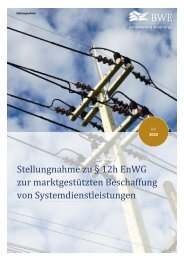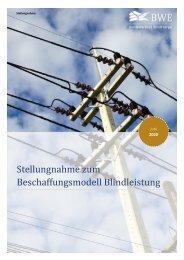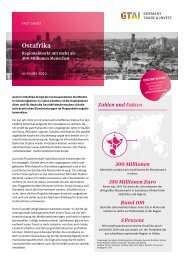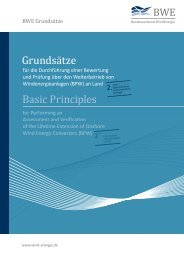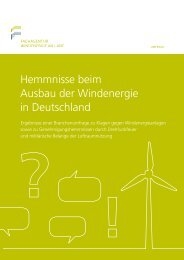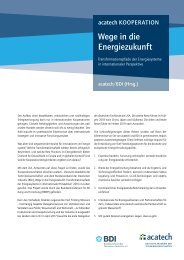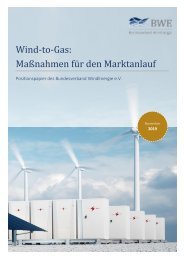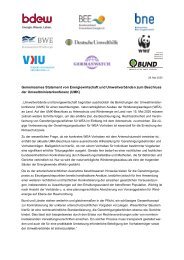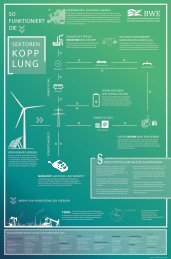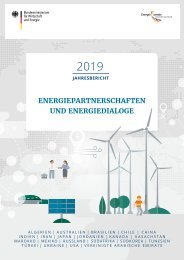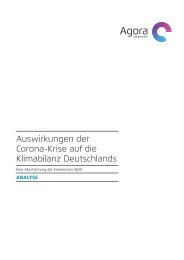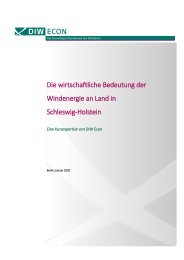vierter-monitoring-bericht-energie-der-zukunft-englische-kurzfassung
Create successful ePaper yourself
Turn your PDF publications into a flip-book with our unique Google optimized e-Paper software.
6<br />
3 Renewable energy<br />
Where do we stand?<br />
Renewables are to become the mainstay of our energy<br />
supply. In 2014, the gross final energy delivered by renewable<br />
sources amounted to 335 TWh. Renewables covered<br />
13.5% of gross final energy consumption.<br />
Renewables were Germany’s number-one source of electricity<br />
in 2014. At 161 TWh, renewables accounted for<br />
27.4% of Germany’s gross electricity consumption. Onshore<br />
and offshore wind provided 9.7%, biomass 8.3% and photovoltaics<br />
6%. Overall, Germany is on course to meet its<br />
renewable electricity consumption targets. The trend seen<br />
in previous years is continued.<br />
At 12.0% in 2014, the share of renewable energy in total<br />
heat consumption is already approaching the 2020 target<br />
of 14%. Overall heat consumption dropped in 2014. This<br />
also affected the amount of heat generated by renewable<br />
energy. In 2014, the amount of heat generated from renewable<br />
sources dropped to approx. 140 TWh. Biomass remained<br />
the leading source of heat.<br />
The use of renewables in the transport sector rose mo<strong>der</strong>ately<br />
in 2014. In view of energy consumption of 36 TWh,<br />
the share of renewable energy in the sector rose slightly to<br />
5.6%.<br />
The EEG surcharge has stabilised since 2014. Between<br />
2012 and 2014, the EEG surcharge rose significantly, from<br />
3.59 cents/kWh to 6.24 cents/kWh. In contrast, the period<br />
since 2014 is characterised by stabilisation. In 2015, the<br />
surcharge dropped to 6.17 cents/kWh. In 2016, it will be<br />
6.35 cents/kWh.



